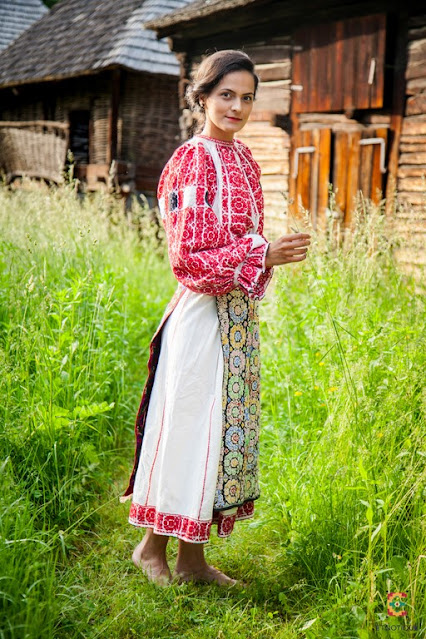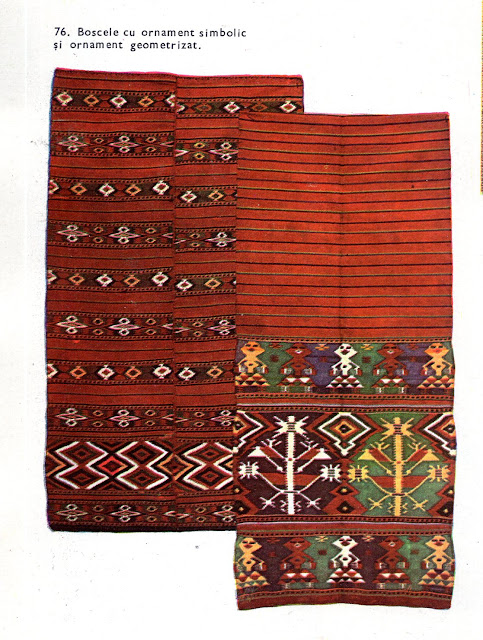Hello all,
I have not talked much about Romania, and I wish to rectify that. Romania has some of the most amazing Folk Costumes of Eastern Europe, with astounding variety. Romania also has a strong presence of ethnic minorities, including Hungarian, German, Ukrainian, Croat, Serb, Bulgarian and Turkish. There are also many pockets of Romanian Speaking people spread throughout the Balkans, who are usually called Vlachs, a shortcut for Wallachian.
Romania is divided into several regions, whose culture varies widely. Here is a map showing the various cultural regions within the current borders of Romania. Please refer to this map while reading.
Here is a second map of "Greater Romania". This includes the former Soviet Moldova [Bessarabia], Budzhak and Northern Bukovyna, which now belong to Ukraine, and southern Dobrudja, which now belongs to Bulgaria. Of these, Bessarabia is overwhelmingly Romanian in Ethnicity [excluding Transdnistria], Northern Bukovyna is almost all Ukrainian, while the others are extremely mixed ethnically.
Bucharest, in Romanian, București, means 'City of Joy'. By the way, the H in Bucharest is meaningless, and should be ignored.
I will proceed roughly counterclockwise from the southwest.
Oltenia
This lies in the southwest part of Romania, and forms the western part of Wallachia. It is divided from Muntenia by the River Olt. It consists of the counties of Mehedinți, Gorj, Dolj, Vâlcea - also spelled Vîlcea, and Romanați.
The chemise is made with shoulder insets, altiță, sewed to the sides of the body fields. The embroidery consists of a large block, often made up of horizontal bands. The sleeve is sewn to the bottom of this, and the embroidery forms two parts. The încreț forms a band at the top of the sleeve, just below the inset, and is usually monochrome, although not always. Below this are the 'rivers', bands of embroidery running down the rest of the sleeve. There is also embroidery on the collars, cuffs, hem, and front, and even back, of the shirt. As is often the case in Romania, the embroidery is often made of small motifs repeated in the composition.
Notice that this example lacks the încreț. This is not uncommon in newer compositions. The following two images show first the back, and then the front.
A pleated skirt, fusta, is common in this part of the country.
This may either be a complete skirt, as shown above, or a wrap skirt that just meets or even gaps in front. In the latter case, a long narrow apron is worn under the skirt. The skirt is hand woven with various motifs in the design, or is embroidered. This example is from Vâlcea.
The double apron costume is also sometimes worn in this region. The aprons are usually different, either in size, color, and/or ornament. This example is from Gorj.
Mehedinți
Gorj
Dolj
Romanați
Thank you for reading, I hope that you have found this to be interesting and informative.
Roman K.
email rkozakand@aol.com
Source Material:
Georgeta Stoica et al, 'Portul Popular de Coloctie', Craiova, 2013
Paul Petrescu et al, 'Arta Populara si Decorativa', Sibiu, 1981
Auralia Douaga, 'Ii si Camasi Romanesti', Bucarest
Tancred Banateanu et al, 'Port, Tesaturi, Cusaturi', Sibiu, 1955
Alexandrina Enachescu Cantemir, 'Portul Popular Romanesc', Sibiu, 1975
Hedvig Maria Formagiu, 'Portul Popular din Romania', Bucharest, 1974
Elena Secosan et al, 'Portul Popular de Sarbatoare din Romania', Sibiu, 1984



























































































So glad to see Romania! A treasure trove of beauty and inspiration. Looking forward to all your posts. Thank you. Charlotte in California
ReplyDelete